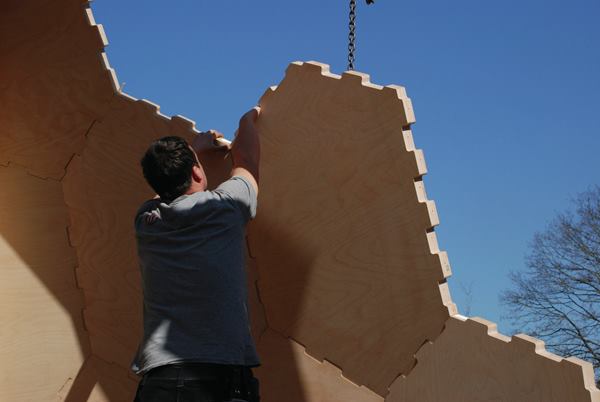
Robots are gaining traction when it comes to the highly precise construction of geometrically complex assemblies. Initially, architects employed them to fabricate small-scale, prototypical installations. But as the technology continues to develop, architects are using machines to create larger, permanent structures. Stuttgart University’s Institute for Computational Design completed the construction of the Landesgartenschau Exhibition Hall, a 1,345-square-foot, 20-foot-tall pavilion created for the purpose of demonstrating innovative building methods. Its prefabricated lightweight timber shell, which has a surface area of 2,640 square feet, is the first structure to be made entirely of robot-fabricated plates, according to the project team.
The researchers selected beech plywood for its lightness, strength, local availability, and alignment with resource-sensitive forestry practices in Central Europe. After studying the microscopic plate joints in sand dollars, they devised a series of 50-millimeter-thick (2-inch-thick) plates with perimeter finger joints for panel-to-panel connections. (Jan 7, 2014)
Sponsored by www.vijayply.com
